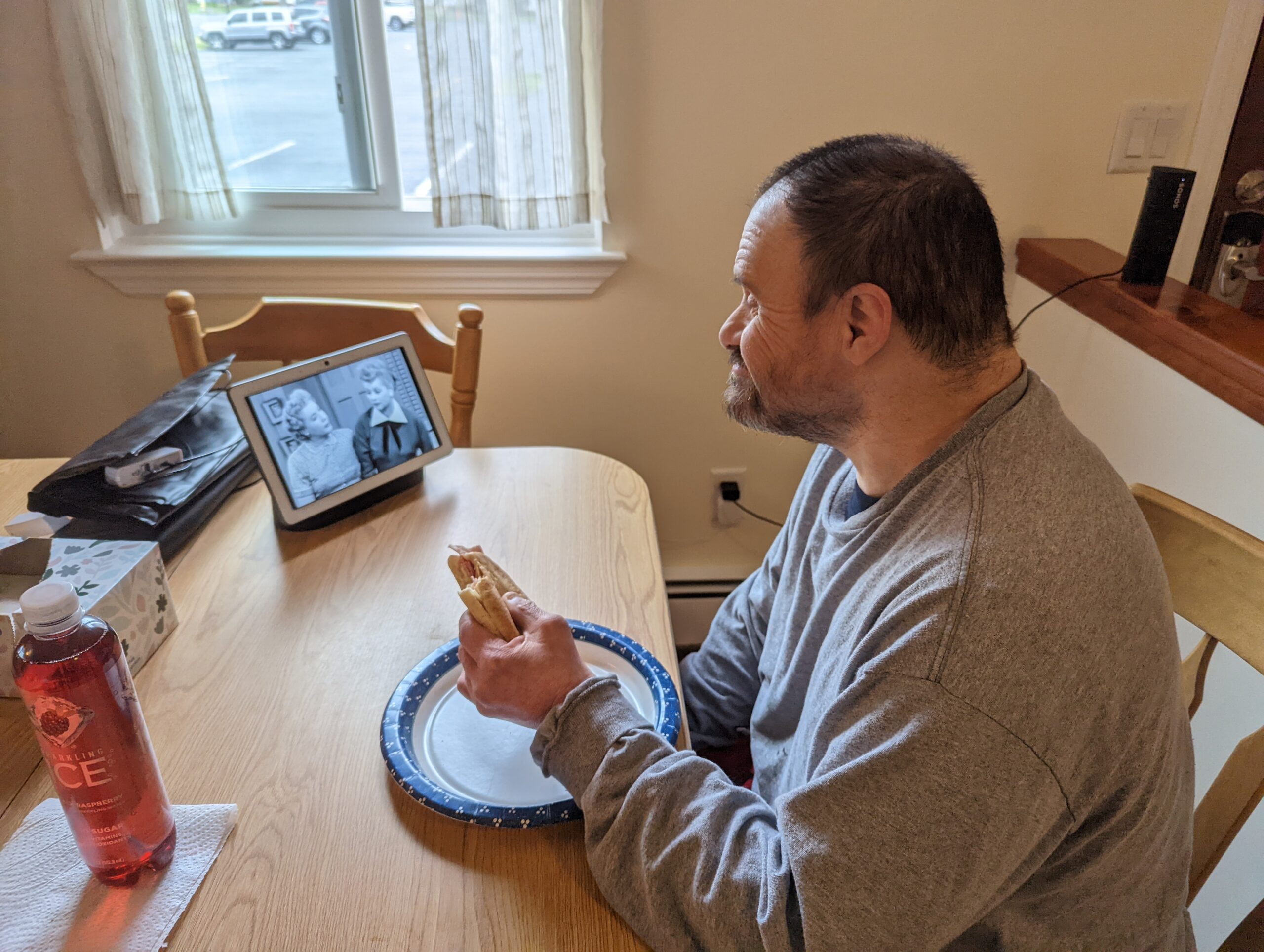
Innovative Use of Samsung Technology Creates Smarter Homes
A special project unfolding at Ability Beyond could help our most vulnerable clients express their needs, even when they cannot speak or sign.
Through a first-of-its-kind initiative, Ability Beyond will gain access in 2023 to raw data from automated Samsung devices in our supported homes—devices that track everything from temperature to motion, sleep patterns, and the UV index.
Taken together, the data can paint a clearer picture of the environmental factors at play when someone is facing a medical, behavioral, or social challenge. That means faster, more accurate, and more person-centered care when folks need it most.
“For many of the people we serve, communication is the greatest hurdle,” said Laurie Dale, Senior Leader of Assistive Technology Solutions. “Our guys have to be heard.”
Progress through partnership
The latest project builds on eight years of cutting-edge work at Ability Beyond to redefine the term “assistive technology”—or, products that help people live more independent lives.
From the invention of Braille in 1829 to modern day cochlear implants and robotic arms, “assistive technology” has evolved dramatically. Yet in 2015, when Ability Beyond began to install SmartThings by Samsung in our group homes, we were among the first in the field to see assistive potential in the mainstream product. Now we use the household automation system at almost 60 locations.
SmartThings has increased client independence and quality of life, made our homes more efficient, and improved safety for residents and staff. But raw data from the devices was fleeting—unavailable for caretakers to capture, analyze, and act on. That’s until Dale went straight to the source and pitched her vision to hardware makers Aeotec.
Phase 1 is gaining data access. In Phase 2, slated for 2024, support and leadership staff will be able to centrally manage the data, meaning they can identify and address trends in health and wellness across our sites.
“We all know that Laurie and [Ability Beyond] are so different from most agencies,” said Carol Napierski of the N.Y. Alliance for Inclusion and Innovation.
“She looks for technology that will give people more access and more control of their environment.”
Napierski and Dale are co-chairs of the N.Y. Alliance Assistive Technology Committee, a group that’s looking to the future of disability care with a commitment to “natural supports” that enrich daily life, rather than monitoring devices. “When we meet, we talk about best practices and what’s new in the field,” Napierski said. “What are we learning? What are we finding? Laurie helps us to move forward.”
DIY tech with The TIP Squad
Dale doesn’t work alone, and her collaborators include young adults from Ability Beyond with disabilities who go by the “TIP Squad”—or, “Technology Innovations for People.” Squad members get paid through an experiential internship to develop STEM skills through a series of real-life projects.
Mike, a founding member of the TIP Squad, has a passion for technology and inclusion. He joined the group to help other people like himself live more independently with Lesch-Nyhan syndrome.
In his 30s, Mike relies on a wheelchair and struggles to type due to fine motor challenges. He was excited by the potential of voice-to-text to send messages without assistance—but ended up frustrated when the phone couldn’t interpret his style of speech. Equipped with STEM experience and confidence from the TIP Squad, he converted his frustration into a work opportunity and got paid by Google Research to contribute 3,000 voice recordings to Project Relate. The initiative is designed to help “people with non-standard speech be better understood.”
“Before this, I felt like I didn’t have a purpose,” Mike said. “Now I do—and I’m making some money.”
Not every TIP Squad solution is so high tech. In fact, the best solution is often homemade—costing pennies to produce in-house, compared with hundreds of dollars from a vendor. Dale has become a whiz at soldering, wiring, coding, designing, and 3D printing—and TIP Squad students learn the ropes, too, under her tutelage. In coming weeks, they’ll use their skills to make an assistive dice shaker for Ryan, a man in his 20s with limited mobility in his hands. Soon he will be able to play board games with his friends by waving his arm over a proximity sensor that agitates the dice in a 3D printed container. The end result: a roll.
To Dale, the dice shaker is just as important as the data project with Samsung. “At the end of the day, we all want to have fun,” she said. “Why should anyone be excluded?”
Technology Innovation
People with cognitive disabilities deserve equal rights to access information and technology. Together, we can make that reality.

